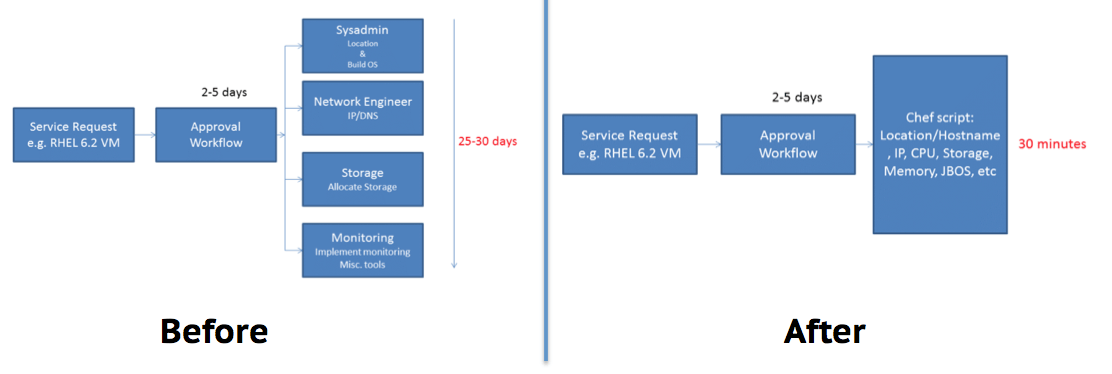Consumerization of IT or Death: OpenStack and Agile IT Operations
With news this past week that BlackBerry’s Not Dead Yet, Consumerization of IT is again topical. If you think that means that the workplace technology debate revolves around iPad vs. Android, you may be missing a fundamental point. Hint: think OpenStack.
Consumers are fickle, and expect constant innovation. And to be sure, smartphone vendors and the telcos that service the devices are in a froth to supply continuous innovation to their markets. That change in markets means this: anyone who thinks they can survive with 6-18 month cycles in changing business apps and IT infrastructure is dead, they just don't know it yet.
Think Agile? Think OpenStack
It’s more or less a settled fact that cloud offerings provide the opportunity to scale up and down quickly. But the big picture includes other issues. Check out this blog post by our friend Jeff Padgett of The Gap, Inc., where he discusses their approach to Agile IT Ops.
As Padgett points out, industry leaders still see "infra and developer collaboration, technology freedom, and core IT and business processes" as hurdles keeping them from being able to truly enjoy the benefits of "n-as-a-service" offerings.
The PDF specification that the folks at Slalom Consulting put together as part of this project (which included OpenStack) stated it in more direct terms:
Traditional Infrastructure is dead. The traditional Infrastructure Sys Admin Role is dead. The traditional network engineer is dead. Traditional capacity planning is dead. All Infrastructure engineering is software development now.
What's interesting here are the changes to The Gap, Inc.'s successful transition to an organizational structure that lets them reap those benefits. Perhaps strange to consider managing IT using Agile methodologies in the same way that you'd manage software development scrums.
For example: You can't use concepts such as unit testing, continuous integration, and so on when all of your IT infrastructure is managed "by hand". What's more, it's difficult to try something and "fail fast" if it takes an average of 35 days to get a new VM provisioned, as it apparently did before The Gap's transition.
[caption id="attachment_443344" align="aligncenter" width="890"] Implementation of Agile IT Ops at the Gap cut orders of magnitude out of VM Provisioning, from 35 days to 30 minutes. Source: http://padgeblog.files.wordpress.com/2013/01/gap-infra-agile-transformation-journey1.pdf, pp 17-18[/caption]
Implementation of Agile IT Ops at the Gap cut orders of magnitude out of VM Provisioning, from 35 days to 30 minutes. Source: http://padgeblog.files.wordpress.com/2013/01/gap-infra-agile-transformation-journey1.pdf, pp 17-18[/caption]
By the way, if you were thinking the approval cycle is slowing down the cycle time of standing up a RHEL 6.2 guest on a VM, you'd be wrong. Chef or Puppet scripts are essential to this, and OpenStack's ReST APIs are ideally suited to it.
Remember, they’re a consumer company: 35 days to get a rugby shirt from www.thegap.com? Walking dead.
Faster to provision a VM with OpenStack than to buy pants
What if you could look at IT the same way you look at software development, and integrate those two teams? You can, if your IT infrastructure is based on software code that automates a standardized set of actions such as provisioning a VM or deploying an application to a particular cluster.
And that's where things get interesting with regard to OpenStack. Because OpenStack gives you this programmatic control over your IT infrastructure, you can look at your IT in this new way. It not only gets you the ability to scale up and down quickly for your other Agile efforts, but also makes IT itself Agile, with all that that implies.
I should remark, of course, that a key requirement is open source, specifically " stable open source project with at least 1 commercial support/training option". OpenStack meets the Gap criteria for the "Enterprise Preferred Lifecycle state."
Who doesn't want to provision a new machine in 30 minutes, rather than 30 days? Same people who want a pizza in 30 minutes and a new pair of slacks the next day.






